Alaska may be known as America’s last frontier, but it could be our next frontier for renewable energy production. You may know Alaska for its oil production, but surprise – it gets 21% of its electricity from hydropower and already has geothermal, biomass and wind energy projects in operation. Plus, it has the potential to become a leader in tidal and wave energy generation.
It has so many renewable energy options, it set the goal of generating 50% of its electricity from renewable sources by 2025. That’s just over a decade from now and a far distance from the oil brand many of us associate with the state.
A key player in this transition is the Renewable Energy Alaska Project (REAP), a coalition formed in 2004 to increase renewable energy production, efficiency and education in the land of the midnight sun. They are working hard to change the conversation about renewable energy in the state capital and to meet the diverse energy needs for all Alaskans, whether they live in urban Anchorage or off the grid in communities throughout a landscape that is larger than Texas, California and Montana combined.
REAP’s founder and Executive Director, Chris Rose, is our guest interviewee this week. We welcome his insights.
– – –
REAP was started in 2004. Who created the organization, and what need were they trying to address?
I founded REAP out of a passion to marry three of my personal interests – the environment, foreign policy and economics. After a decade of practicing law in small, isolated Alaska villages that suffered from a host of social problems, I realized that there are at least two Alaska’s – the one where most people live in the road connected areas north and south of Anchorage, and much smaller, remote, mostly Alaska Native communities that are spread out over a geography the size of France, Spain and Portugal combined. After learning more about the vast renewable energy resources that exist alongside of the oil and gas that Alaska is known for, I started working to fill an obvious niche – that of a statewide renewable energy education and advocacy group. Prior to starting REAP I was a professional mediator, so I knew it would be essential to bring together a diverse set of energy stakeholders so that those parties could understand each other’s positions and come to consensus on policy that would increase the development of renewable energy. From the beginning I have framed the issue of renewable energy as a form of risk management, a frame that has appealed to both Alaska’s conservatives and liberals. As time has passed, the group has grown from 16 to 85 dues paying organizations and has added energy efficiency as Alaska’s “first fuel.”
REAP is a coalition of many different entities, small and large. What are the benefits to using the coalition model as opposed to other types of structures? How does having many different partners on board advance your mission?
REAP has successfully brought together a very diverse group of stakeholders through its membership coalition, including the state’s largest electric utilities, Alaska Native corporations, grassroots environmental groups and tribal organizations. One of the greatest benefits of this coalition model is our diversity. Rather than being made up of a few like-minded organizations, our members represent a wide array of cultural, economic and advocacy groups who would not otherwise be traditional allies. For them to speak with one united voice on renewable energy and energy efficiency gives REAP the utmost credibility from our state’s policy makers. By steadily increasing both the size and diversity of REAP’s membership, our organization has been able to facilitate conversations that are more likely to result in long-lasting consensus. Additionally, the variety of perspectives put forth by REAP members has shown Alaska’s elected officials that clean energy is not only for those who care about the environment – it is an important economic solution that businesses care about too.
How are Alaska’s energy needs different than the rest of the country?
Alaska already suffers disproportionately from climate change impacts and due to its small, isolated market, it is more vulnerable to volatile fossil fuel prices and potential shortages. More than any other place in the United States, Alaska needs to move towards energy self-sufficiency.
Currently residents in and around Anchorage, where most of the state’s population lives, are almost totally reliant on locally produced Cook Inlet natural gas for heating and electricity. After decades of cheap gas, utilities are now seeing much higher prices and shorter-term contracts as Alaska gas mixes more into the world market. Though renewed exploration activity in Cook Inlet has resulted in some new gas discoveries, REAP continues to remind policy makers that Alaska’s small domestic energy market does not provide local consumers any leverage to get a good “local price.” New gas producers will only expend large amounts of capital to explore for gas if they can sell it into the Pacific liquefied natural gas (LNG) market for the highest price possible.
Meanwhile, Alaska’s 200+ remote, non-grid connected communities rely almost completely on diesel fuel for heating and electric generation. Consumers there are suffering from the highest energy costs in the nation, with prices averaging more than $.50/kWh for electricity and $8-10 a gallon for heating oil. To put that into perspective, the average cost per kilowatt-hour in the United States is about $.10. Some villagers are paying more than 50% of their income just to heat and power their homes. These energy prices are crippling communities. Even in the state’s second largest city of Fairbanks, where residents have no access to natural gas, people are leaving town because they can’t afford to pay for utilities.
Finding an answer to Alaska’s energy problems is complicated and will likely result in some increased costs for consumers. There are no silver bullets. However, rising, uncertain and volatile natural gas and diesel fuel prices provide an important and timely opportunity for REAP and its allies to educate the public and policy makers about the nuances and long-term opportunity costs of Alaska’s crucial energy decisions, and the benefits of displacing fossils fuels with energy efficiency and local and predictably-priced renewable energy.
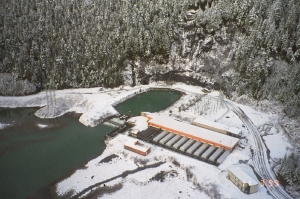
The Snettisham Hydroelectric facility located 28 miles south of Juneau, Alaska.
(Credit: Alaska Center for Energy and Power)
What are the most prevalent sources of renewable energy in Alaska?
Currently hydroelectric power supplies 21% of Alaska’s electricity load, making it the state’s largest source of renewable energy. While some states do not count hydroelectric projects towards their renewable energy goals or standards, Alaskans expect hydropower to play a significant role in reaching the state’s goal to generate 50% of our electricity from renewables by 2025.
In addition to hydroelectric, there is great potential to develop other sources of renewable energy both regionally and statewide. Alaska is already considered a pioneer in developing small wind-diesel hybrid systems to serve small remote communities, and in the last couple of years several large-scale wind farms have been installed on Alaska’s grid to displace natural gas. In Southeast and the Interior, biomass has become a very popular source of power generation, with residents burning wood in community systems for heat and to generate electricity. Alaska has 90% of the nation’s tidal, and 75% of the country’s wave power potential. Looking forward there are great opportunities to develop more wind, biomass and hydro as well as tidal, wave geothermal resources and even solar resources. The primary barrier to their development today is Alaska’s low domestic power demand that, coupled with huge expanses of roadless areas, leads to very high transmission costs. Therefore, a large amount of these resources are today considered “stranded,” much like the massive reserves of natural gas that exist on Alaska’s North Slope.

Richard Heinberg of the Post Carbon Institute speaks at the 2013 Business of Clean Energy in Alaska conference
REAP organizes many different educational programs and events. What are some of your most popular and what makes them so successful?
Since its inception in 2004, REAP has hosted a number of successful events across the state, including the Alaska Renewable Energy Fair and the Business of Clean Energy in Alaska Conference. While both of these events play an integral role in our education and outreach efforts, each focuses on different topics and attracts their own unique audience.
Now in its 10th year, the Alaska Renewable Energy Fair is a free street fair held annually in downtown Anchorage. This educational all-ages event encourages participants to start thinking about where their energy comes from, while providing a fun and relaxed atmosphere to enjoy with friends. The Fair offers a number of clean energy workshops, DIY demonstrations, live music and local food and craft vendors that cater to a variety of interests and age groups.
In contrast, the Business of Clean Energy in Alaska Conference (now in its 6th year) brings state, national and international energy experts together to discuss the economic benefits of developing renewable energy and energy efficiency in Alaska. Drawing names like former Michigan Governor Jennifer Granholm, green building author and expert Jerry Yudelson, NREL Director Dr. Dan Arvizu and US Senator Lisa Murkowski, this event has played a major role in the development of key clean energy legislation for Alaska. As a result, business and policy leaders from across the state look to this conference year after year as a place to find solutions to Alaska’s energy needs.
Your organization also offers some unique public participation opportunities, such as your 1,000 Alaska Energy Stories project where Alaskans can share their personal experience as it relates to the use and cost of energy in their daily lives. What outcome do you hope to achieve by sharing these personal stories?
REAP is constantly trying new ways to educate Alaskans through our messaging and campaign strategies. Most recently, we launched our “1,000 Alaska Energy Stories” project to humanize the energy challenges our residents face, highlight the benefits of local renewable energy generation and demonstrate the success of energy efficiency measures. Our goal is to reach a general public that is bombarded with information through short online videos and photo essays that share energy stories from a diverse spectrum of Alaskans. The truth of the matter is energy can be a really complicated topic to explain with so many convoluted talking points out there. To effectively deliver your message to an audience with quickly diminishing attention spans, you have to get creative in order to reach people. Our goal with this project is to make that connection with individuals and help them realize how energy affects their day-to-day life. Eventually, the stories will be featured on a new, interactive website managed by REAP and shared through our social media sites.

Partially funded through the Alaska Renewable Energy Fund, the Pillar Mountain Wind Farm provides 9 MW of power to the city of Kodiak. Combined with the Terror Lake hydroelectric project, Kodiak’s electrical system now runs off about 98% renewable energy.
(Credit: Windpower Engineering & Development)
REAP has had several major accomplishments to date. Can you point to some that you are most proud of? And which ones have helped the most in achieving your organization’s primary goal of increasing renewable energy production in Alaska?
It is encouraging that Alaskans from all walks of life are beginning to think differently about renewable energy and energy efficiency because of REAP’s work. Thanks to our grass-tops education, the conversation in the state legislature has moved from where it was ten years ago, when the question was “whether” to invest in clean energy programs, to a question now of “how much” the state should invest. Along with that, the state now has a goal to generate 50% of its electricity from renewables by 2025, which REAP played a major role in creating. We have also succeeded in establishing and funding several important programs that, since 2008 alone, have funded over $800 million worth clean energy projects in the state (not counting over $200 million for the Susitna-Watana dam). These programs include the Renewable Energy Fund, which REAP had a decisive role in establishing in 2008. So far, this fund has provided $227 million for over 230 renewable energy feasibility and construction projects across the state, from a wind farm on Kodiak Island to a biomass-fired power plant in North Pole near Fairbanks. In 2012 REAP was instrumental in reauthorizing that Fund for an additional 10 years.
In addition to promoting renewable energy production in Alaska, we are also very proud of REAP’s work to increase our state’s energy efficiency. Since 2008, the Alaska Legislature has appropriated over half a billion dollars to the state’s two residential energy efficiency programs, which have resulted in over 32,000 homes receiving energy efficiency retrofits. REAP was very involved in securing this and other efficiency funding, including low interest financing for both public and private commercial buildings to complete necessary efficiency measures. Thanks in part to REAP’s ongoing efforts, the state now has a goal to increase its energy efficiency 15% by 2020.
In addition to renewable energy, REAP also focuses on energy efficiency. Talk about some of the programs or initiatives you have on that front.
REAP believes renewable energy and energy efficiency work hand-in-hand in securing a clean, stably priced energy future for our state. While it’s not as “sexy” as building a shiny new wind turbine, the benefits of energy efficiency are exponential, and will help us reach our states goal to generate 50% of our electricity from renewables much faster. Simply put, the fewer kilowatt-hours or BTUs you consume the fewer generation projects you will have to build to meet your community’s heat and electric needs. Through its education and advocacy efforts, REAP stresses that energy efficiency and conservation always be the first investments Alaskans make to stabilize their energy costs. As a result, we have helped to establish several energy efficiency-related goals and mandates in Alaska, including a mandate to energy retrofit 25% of the state’s public buildings by 2020 and a goal to reduce overall energy usage 15% by 2020.
Over the past 10 years, our organization has built strong relationships with several state and federal agencies that work in the energy efficiency field, including the Alaska Energy Authority, the Alaska Center for Energy and Power at the University of Alaska Fairbanks, and the Alaska Housing Finance Corporation. Through these partnerships, REAP has been able to execute numerous successful outreach projects focused on energy efficiency and conservation. For the past two years, REAP has organized the Great Alaska Energy Challenge to engage public and private building owners in a friendly competition to conserve energy and reduce their utility bills during the winter months. This program has been especially effective in teaching commercial building owners about the financial benefits of being energy efficient, and connecting them with the resources available to make necessary upgrades. Additionally, we recently designed an Alaska-specific K-12 energy efficiency curriculum called AK EnergySmart to teach young people about the importance of efficiency and conservation. Plans are now underway to continue outreach efforts for AK EnergySmart, and connect Alaska teachers with this valuable resource in the coming years.
While there’s still work to be done, Alaska has made great strides in making our homes and buildings more energy efficient. Since 2008, the Alaska Legislature has appropriated $560 million to the popular weatherization and home energy rebate programs, which has resulted in over 32,000 home retrofits and an average energy savings of 30% for participants. REAP is leveraging these residential efficiency successes into a case for a statewide energy building code that would mandate efficiency for new construction, thus limiting the number of Alaskan homes needing be retrofitted through state programs. We are also advocating for new avenues to reduce energy consumption in the commercial sector, including a Publicly Assessed Clean Energy (PACE) program for commercial buildings in Alaska.
What’s next for REAP?
REAP is currently in the midst of several significant state energy policy efforts that will have a critical impact on the way Alaskans produce and consume energy over the coming decades. On the energy efficiency front, REAP is working with the Cold Climate Housing Research Center and the Alaska Housing Finance Corporation on strategies to establish a new, statewide residential building code with energy efficiency standards that would ensure that all new homes in Alaska are highly efficient. In addition, REAP’s board recently approved staff to begin educating policy makers about the concept of a Publicly Assessed Clean Energy (PACE) program that would be focused on the state’s commercial building sector. REAP will work in 2014 to continue building interest and consensus on how commercial PACE could work in Alaska.
REAP is also poised to expand its involvement in energy education. While messaging to adult ratepayers and community decision makers is important, REAP believes educating children, teens, and college students about where their energy comes from is both a way to influence their parents, and also critical to creating the next generation of informed citizens and consumers who value and support clean energy. REAP is now making significant progress toward its objective of launching the Alaska Network for Energy Education (ANEE), an effort to bring together K-12, university and workforce development energy educators to share experiences and curricula, eliminate redundant programs, and help build a strong clean energy workforce for Alaska’s future.
– – –
We encourage REAP to keep fighting the good clean and green fight and are excited to watch their progress. You can help support a clean energy future for Alaska by donating to REAP here.
Liz Faris, Account Manager
Collaborative Services, Inc.

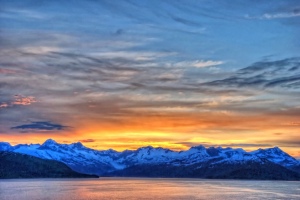
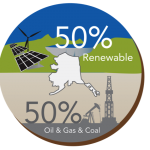
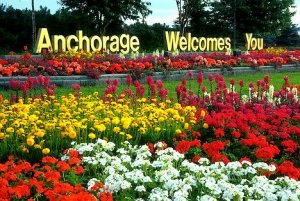

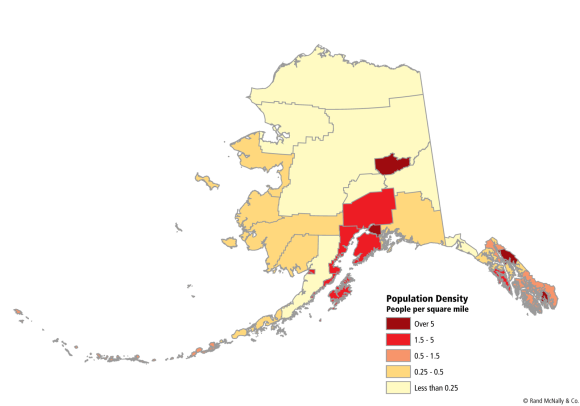

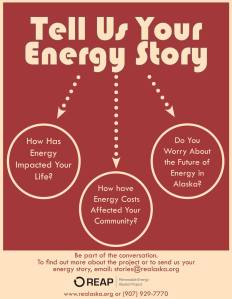

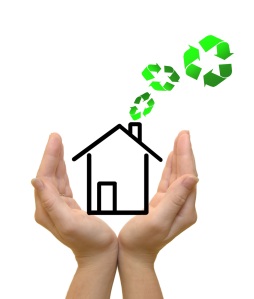
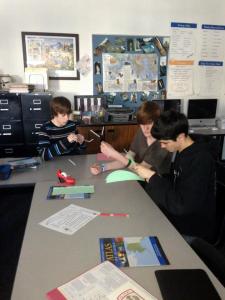
Recent Comments